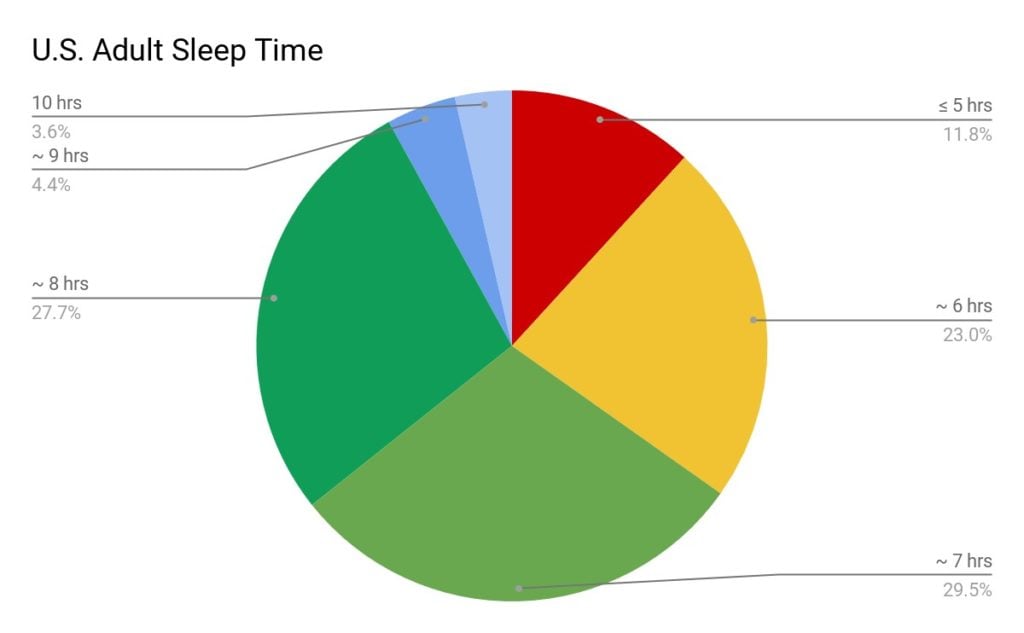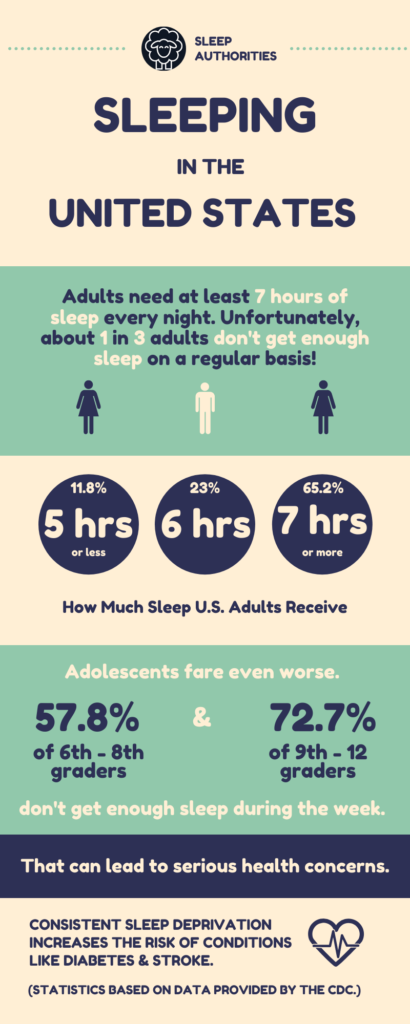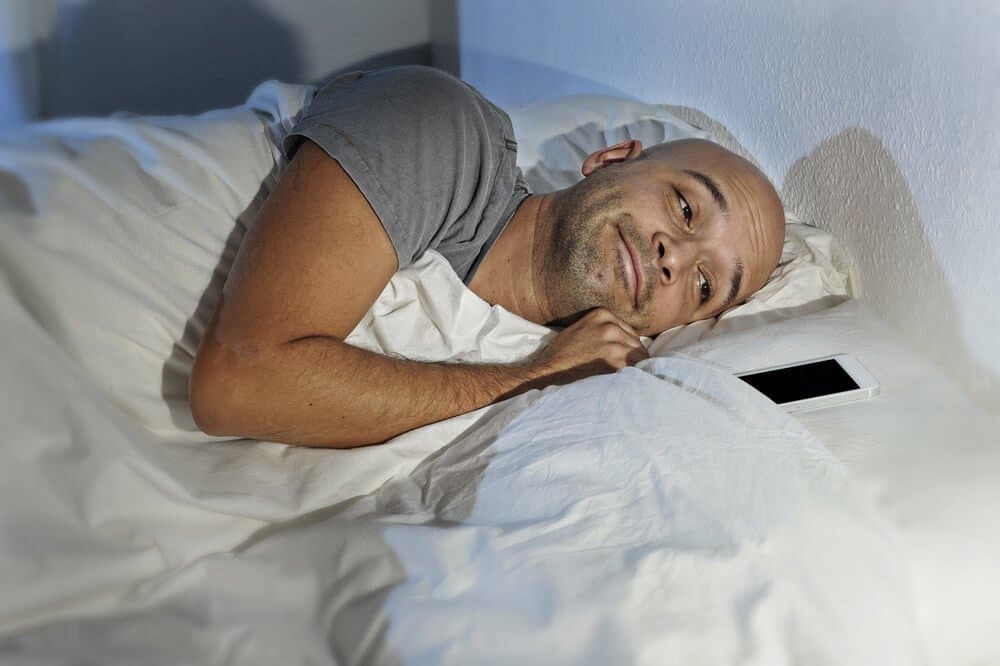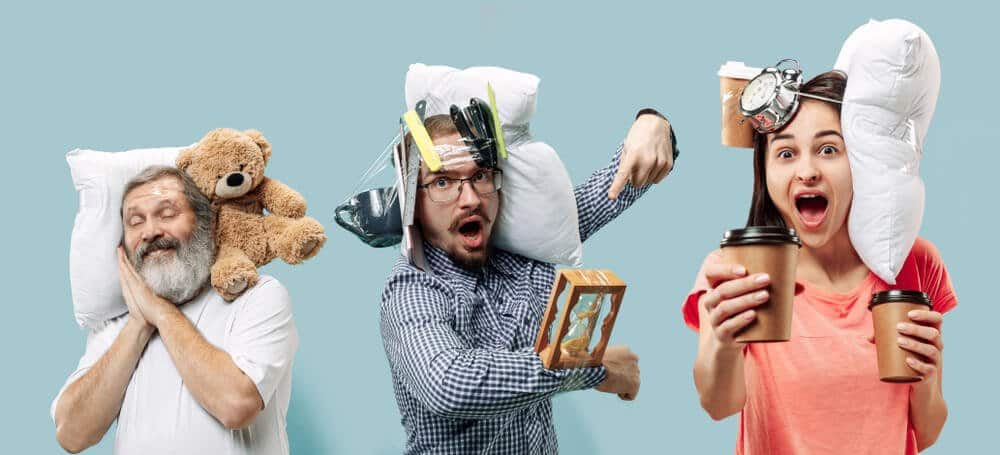We’re sleep statisticians here at Sleep Authorities. If you’ve ever wanted to see sleep broken down into numbers, you’ve come to the right place.
How Much Sleep Does the U.S. Get?
Let’s start with the basics. How much sleep should you aim for each night? While sleep needs vary by age and other factors, adults generally need at least 7 hours of sleep per night.[1] Unfortunately, however, only 65.2% adults (ages 18-60) in the United States hit the 7-hour mark.[2]

Adolescents fare even worse in the States. Teenagers (12-18) typically need about 8-10 hours of sleep per night.[3] How many hours of sleep do they actually get, though? Not much. On an average school night, 57.8% of 6th to 8th graders didn’t get enough sleep. It only gets worse from there. 72.7% of 9th to 12th graders reportedly didn’t get at least 8 hours of sleep during the week.[4]

How Much Sleep Do People Around the World Get?

So, there’s a large number of people in the United States that aren’t sleeping enough. While that’s certainly a problem, on average, American adults do hit the 8-hour sleep goal. How does the U.S. stack up to the rest of the world in this regard?
According to a 2009 study by the Organisation for Economic Co-operation and Development (OECD), the United States fares well in average sleep duration compared to other surveyed countries. Americans averaged nearly 520 minutes of sleep per day, second in duration only to the French, who clocked in roughly 530 minutes of snooze-time. Japanese and Korean sleepers fared the worst out of the surveyed countries, only getting about 470 minutes of sleep each.[5]
How Do People Like to Sleep?
Everyone has different sleeping preferences. Ever wonder how yours compare to other people’s?
Bed Sizes
When people get ready to snooze, what size bed are they most likely to rest on? It might not be what you think. As it turns out, the King is no longer on top. According to one study, the most common mattress size for U.S. adults is now the Queen.[6]
Cell Phones

Before snuggling up on their beds, where do U.S. adults place their cell phones? If you said on or next to their beds, you’d be right. It seems that the younger people are, the more likely they are to do this. A 2010 survey found that 90% of young adults (ages 18-29) slept with their phones close. 70% of the next age group (ages 30-49) did the same whereas only 50% of those in the second-to-last age group (ages 50-64) did. Those who were 65 or older were the least likely to have their phones close to them when they slept (34%).[7]
Partners
When people in relationships finally hit the hay, are they sleeping with their significant other? Not always, according to several studies. One 2001 National Sleep Foundation (NSF) survey, for example, revealed that 12% of married U.S. couples slept solo. A 2005 survey from the same organization showed that nearly a quarter of U.S. couples (married and unmarried) didn’t sleep in the same bed together.
Snorefest

Maybe people are drifting away from bed-sharing due to their partner’s snoring. A 2002 NSF poll showed that 37% of adults reportedly snore a least a couple nights every week. 27% admitted they snore every or almost every night. The group most likely to snore? Men and those between the ages of 55-64, said a 2003 NSF survey.[8]
Who’s Ready for Nap Time?
Nap time isn’t just for kids. About a third of U.S. adults (34%) say they enjoy a nap during their average day, with men (38%) being a little more likely to catch a few extra Z’s than women (31%). While naps might feel great at the time, data suggests that those who nap are more likely to have issues sleeping at night. Of people who had issues sleeping the night before, 41% of people said they had also napped.[9] Coincidence? Maybe, but the data suggests otherwise.
Where Does Your Fur Baby Sleep?

We love our furry friends, but do most of us love our fur babies sleeping in our beds with us? Plenty of people do, according to the American Kennel Club. One of their surveys revealed that 45% of dog owners let their pups sleep in their beds.[10] Kitties are even more likely to curl up with their humans at night. The CDC estimates that 60% of cats in the U.S. sleep in their owners’ beds.[11]
References
[1,3]Centers for Disease Control and Prevention. (2019). Are you getting enough sleep? Retrieved from https://www.cdc.gov/features/sleep/index.html
[2] Liu, Y., Wheaton, A.G., Chapman, D.P., Cunningham, T.J., Lu, H., & Croft, J.B. (2016). Prevalence of healthy sleep duration among adults — United States, 2014. Mobidity and mortality weekly report, 65(6):137–141. DOI: http://dx.doi.org/10.15585/mmwr.mm6506a1
[4] CDC. (2018). Sleep in middle and high school students. Retrieved from https://www.cdc.gov/features/students-sleep/
[5] Organisation for Economic Co-operation and Development. (2009). Special focus: measuring leisure in OECD countries. In Society at a glance 2009 (pp. 19-49). Paris, France: OECD.
[6] Kunst, A. (2019). Width of bed used by U.S. adults 2017, by age group. Statista. Retrieved from https://www.statista.com/statistics/673201/mattress-size-among-us-adults-by-age-group/
[7] Heimlich, R. (2010). Do you sleep with your cell phone? Pew research center. Retrieved from https://www.pewresearch.org/fact-tank/2010/09/13/do-you-sleep-with-your-cell-phone/
[8] National Sleep Foundation. (n.d.) Snoring and sleep. Retrieved from https://www.sleepfoundation.org/articles/snoring-and-sleep
[9] Taylor, P. (2009). Nap time. Pew research center. Retrieved from https://www.pewsocialtrends.org/2009/07/29/nap-time/
[10] Gibeault, S. (2017). Where do dogs sleep at night? American kennel club. Retrieved from https://www.akc.org/expert-advice/lifestyle/where-dogs-sleep-night/
[11] Chomel, B.B., & Sun, B. (2011) Zoonoses in the bedroom. Emerging infectious diseases, 17(2): 167-172.


